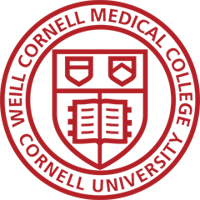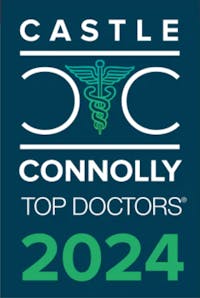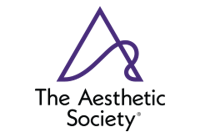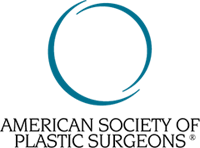For decades, liposuction has been one of the most popular cosmetic treatments available. This miraculous procedure is known for attaining remarkable results, and patients are usually in a rush to see the final outcome. While the end result can be truly outstanding, it is important that patients have a good understanding of the recovery process before choosing to undergo the procedure.
The recovery from liposuction can be a difficult challenge, and patients should take steps to plan out their post-recovery period. This popular surgical treatment is a great option for fat removal, particularly for patients struggling with stubborn fat in areas such as the belly, back, thighs, arms, or face. However, it is vital that patients have realistic expectations for the results of the procedure and be prepared for what comes after surgery.
Why is the recovery period important?
The recovery period following any surgery plays a vital role in the patient’s results. While non-invasive cosmetic treatments require little downtime, the healing process after liposuction can have a huge impact on the outcomes of the treatment.
How long does the healing process after liposuction take?
As with any surgical treatment, the recovery process from liposuction varies for every patient. Factors such as the size of the treatment area, the patient’s age, and their overall health all play a role.
Recovering from liposuction usually takes anywhere from 4 to 6 weeks. It can take up to three months, however, for the final results of the procedure to settle in.
Following all post-operative instructions from the practitioner, as well as getting plenty of rest and taking medications as prescribed, will help patients achieve the best results possible and cut down on recovery time.
What is the timeline like for recovery from Liposuction?
The liposuction recovery timeline is typically broken down in the following way:
- Immediate following the surgery
- Day 1
- Week 1
- Month 1
- Month 3
As mentioned before, following the practitioner’s post-care instructions will help speed up the recovery process.
Immediately following the surgery
It is normal for patients to experience some discomfort in the hours immediately following their operation.
Some effects include:
- Mild to moderate pain
- Swelling and bruising around the treatment area
- Limitations in movement
Following the procedure, patients will usually require some rest and/or sleep. Our staff provides a comfortable experience for the patient until they are ready to go home.
Patients will be given medications to be taken at home. Compression garments will be wrapped around the treatment sites to keep the wounds protected. At this point, patients will still be affected by the anesthetics, so it is vital to have a friend or family member drive you home.
Day 1
On the first day, after returning home from surgery, it is important to have somebody around to help around the house and run errands. Patients will still feel sleepy at this point and will have to take it easy.
As the anesthetics slowly wear off, the pain will start to become more noticeable. Patients can get relief from these symptoms by using the painkillers prescribed to them. Ice packs and compression garments can also help mitigate swelling.
Compression garments should be kept on at all times. Showering and bathing should be avoided at this time, as they can lead to complications.
The first week
Treatment sites will still look swollen and bruised throughout the first week following the procedure. However, the pain should start to wear off. Some patients even feel well enough to get back to work and carry on with their daily activities.
Patients are encouraged to engage in some light movement and even take a short walk if they feel well enough to do so. Heavy lifting and vigorous exercise, however, should still be avoided. Starting from the two-day mark, patients must stand up and walk around every few hours in order to prevent blood clotting, which can cause severe complications.
Incisions must be kept clean and properly dressed to lower the risk of infection.
The follow-up appointment
Patients are required to have a check-in appointment at the end of the first week. The doctor will take a look at the wounds to make sure that everything is healing properly. Following this appointment, patients will be able to take a shower. However, submerging oneself into water (by taking a bath or going swimming) should still be avoided.
During this appointment, patients will receive further instructions about how to proceed with their healing process.
The first month
During the first month, there is a considerable reduction in pain, but there will still be some discomfort. Patients can start taking showers and doing moderate exercise, such as walking. Lifting weights should still be avoided during this time.
There may still be some bruising and swelling at this point, but it will start to dissipate. Patients will start to see results about 2 to 3 weeks following the procedure, provided that the swelling has reduced enough.
The first three months
After the first month, patients can remove their compression garments. They will notice that the treatment area has become slimmer. At this point, the results are much more visible, although swelling and bruising may linger a bit longer.
Patients should take note of any irregularities around the treatment site. Rashes or redness that continue to get worse after a month are usually an indication of infection. In such cases, it’s important to notify the surgeon right away.
By the three month-mark following the procedure, patients will be able to see what their results will look like. As with any surgery, taking proper care of the treatment sites will ensure that patients develop the best body contours possible.
What is the takeaway?
Recovering from a liposuction treatment is not always an easy or quick feat. While the aforementioned information is vital to understanding this process, it should be known that every individual will have their own unique experience. As such, patients should listen to their bodies and instincts.
Understanding what the recovery period entails will help patients manage their expectations and create the conditions for a positive healing process. As with any procedure, recovery is just as important as the surgery itself. Contact our office for a consultation with board-certified plastic surgeon, Dr. Anthony.







